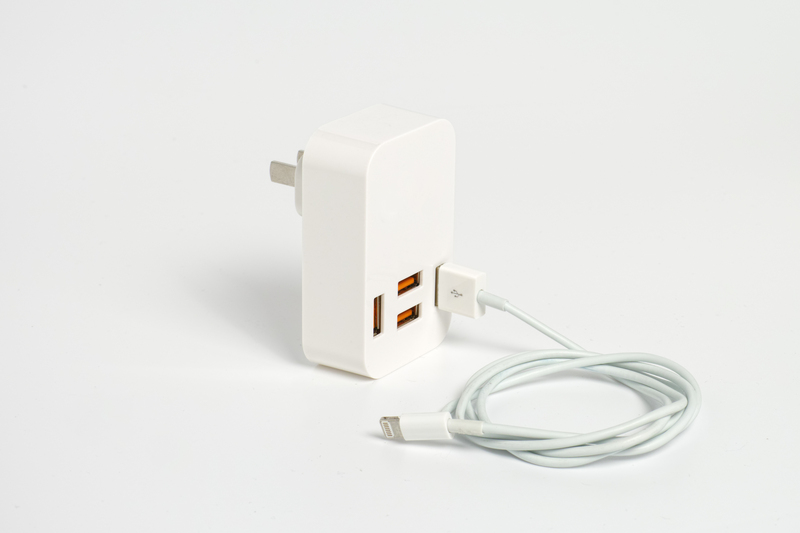Long-Term Sofa Storage Unlocked: Expert Tips Inside
Posted on 28/05/2025
Long-Term Sofa Storage Unlocked: Expert Tips Inside
Are you considering moving, downsizing, or simply need to keep your sofa out of the way for a while? Protecting your valuable furniture for extended periods requires much more than just covering it and hoping for the best. Long-term sofa storage is an art--and, when done correctly, ensures your couch stays as comfortable and pristine as you remember. In this comprehensive guide, our experts reveal the best sofa storage tips for prolonging your furniture's life, whether you're tucking away a leather sectional or a family heirloom.
Why Proper Long-Term Sofa Storage Matters
Many overlook the impact improper storage can have on sofas, especially for long durations. Without the right preparation and environment, your couch can fall prey to moisture, pests, mold, and structural damage. Expert sofa storage strategies shield your investment, preserve materials, and make moving back fuss-free.
- Prevent irreversible damage like frame warping or fabric discoloration
- Prolong lifespan of upholstery and cushions
- Maintain resale value and aesthetic appeal
- Reduce future cleaning and repairs

Essential Steps Before Sofa Storage
1. Thorough Cleaning is a Must
Before you store your sofa, cleaning is paramount. Dirt, crumbs, pet hair, and moisture residue can attract insects or cause stains to set over time.
- Vacuum all crevices and under cushions
- Treat stains with the appropriate upholstery or leather cleaner
- Sanitize armrests, legs, and non-fabric parts
- Allow the sofa to dry thoroughly--dampness is your enemy!
2. Disassemble Where Possible
Reducing the bulk of your sofa helps with both transport and storage. Remove any detachable legs, arms, or cushions. Label and bag hardware for easy reassembly. Place cushions in breathable, cotton sheets or fabric storage bags to avoid trapping moisture.
3. Protect Vulnerable Materials
Different sofas need different care:
- Leather: Apply a leather conditioner to prevent cracks and drying
- Fabric: Spray on a fabric protector and let it dry completely
- Wooden Frames: Polish with wood oil or wax to guard against humidity
How to Store a Couch for the Long Run: Step-by-Step
1. Use the Right Sofa Covers
Plastic wrap should be avoided for extended periods--it traps moisture and encourages mold. Instead, choose thick, breathable covers such as moving blankets, cotton sheets, or specialized furniture covers. Secure them gently, avoiding tight ties that may imprint or warp the shape.
- Wrap cushions separately to maintain their shape
- Avoid direct contact with plastic for any extended storage
- Ensure covers allow airflow to reduce condensation
2. Climate-Controlled Storage Is Your Best Friend
Storage environment matters more than you think. Extreme temperature swings, damp basements, or garages are hazardous for upholstered furniture. For long-term couch storage, rent a modern, climate-controlled self-storage unit. This minimizes the risk of warping, mildew, and pest invasions.
- Ideal humidity: 30%-50%
- Safe temperature: 55-75?F (13-24?C)
3. Elevate the Sofa Off the Ground
Never store sofas directly on concrete or warehouse floors. Moisture can seep up from below, especially during weather changes, leading to mold and rot. Always elevate your sofa using furniture pallets or bricks. Pro tip: Place a sheet of breathable fabric between the wood/fabric and the pallets to avoid pressure marks.
4. Mind the Sofa's Orientation
Store your couch in its normal, upright position whenever possible. Avoid stacking items on top of the sofa, which may deform cushions or the frame. Large sectionals or recliners should also be disassembled, with each piece stored upright and separately if space allows.
Special Considerations for Different Sofa Types
Storing Leather Sofas Long-Term
Leather is beautiful but unforgiving. It dries, cracks, and stains easily with improper storage. Take these extra steps:
- Apply a generous layer of high-quality leather conditioner
- Avoid plastic and use only cotton or canvas covers
- Keep out of direct sunlight, which bleaches and worsens cracks
- Air out the storage area periodically to prevent musty smells
Fabric and Upholstered Sofa Storage
Upholstery attracts dust and pests, and can be difficult to deep-clean later. Keep this in mind:
- Vacuum thoroughly and spot treat stains before storage
- Add a couple of silica gel packs inside cushion storage bags to absorb moisture
- Wrap in breathable covers, avoiding tight shrink-wrap
Storing Antique or Heirloom Sofas
Antique sofas require even more care:
- Avoid chemicals and cleaners not specifically recommended for antique materials
- Consult a professional if unsure about the right cleaning method
- Store in small, climate-controlled units to avoid jostling and exposure
Expert-Proven Tips for Stress-Free, Long-Term Couch Storage
- Leave space for airflow: Don't shove the sofa against the wall inside the unit--leave several inches all around.
- Check items periodically: Visit your storage unit every few months for a quick check-in. Address any issues before they become permanent.
- Log the assembly process: Take photos as you disassemble your sofa for an easy reassembly later.
- Store cushions vertically: This keeps them from flattening and helps air circulate freely.
- Use pest deterrents: Add all-natural pest repellents (lavender sachets, cedar blocks) around the sofa for extra protection.
The Biggest Mistakes to Avoid in Long-Term Sofa Storage
- Skipping the pre-storage cleaning process
- Using unventilated plastic coverings
- Ignoring climate conditions in cheap garages or sheds
- Overstacking or crushing the sofa with heavy boxes
- Storing directly on the floor (especially concrete!)
- Forgetting to check up on your storage periodically
Unlocking the Benefits of Proper Long-Term Sofa Storage
By applying these sofa storage best practices, you'll enjoy multiple benefits:
- No costly repairs when your sofa comes out of storage
- Preserved value--great if you plan to sell or gift the sofa later
- Saves time and effort when you need your furniture again
Remember, good storage is an investment--not just an expense!

Frequently Asked Questions About Long-Term Sofa Storage
How long can I safely store my sofa?
If you follow all expert sofa storage guidance, your sofa should remain in excellent condition for years. Aim for annual check-ins for storage longer than 12 months.
What's the best way to move a sofa into storage?
Disassembly is key. Wrap all pieces securely, use furniture sliders or dollies, and lift carefully to prevent undue stress on the frame.
Is it okay to keep my sofa in a garage or basement?
Generally, no. Fluctuating temperatures and humidity are hard on furniture. Invest in a climate-controlled storage unit for peace of mind.
Should I use mothballs or chemical pest repellents?
Avoid these near fabric surfaces--they leave stubborn odors and stains. Instead, use natural options like cedar or lavender.
Conclusion: Sofa Storage Success Unlocked
Storing your sofa long-term doesn't have to be stressful or damaging. With the right of long-term sofa storage techniques, your couch will emerge from storage looking and feeling as good as ever. Think of it as future-proofing your comfort and your investment!
Ready to store your sofa like an expert? Follow these proven steps for peace of mind, and enjoy a seamless home transition--no matter how long your sofa needs to be out of sight. For any special cases, remember: when in doubt, consult the storage experts!
Quick Recap: The Ultimate Sofa Storage Checklist
- Clean and dry thoroughly
- Disassemble if possible
- Treat and condition materials
- Wrap in breathable covers--not plastic!
- Rent a climate-controlled unit
- Elevate off the floor
- Avoid stacking heavy objects
- Check periodically for issues
If you follow these tips, you'll unlock the secret to flawless, long-term sofa storage--giving your couch many more years of use and comfort.


